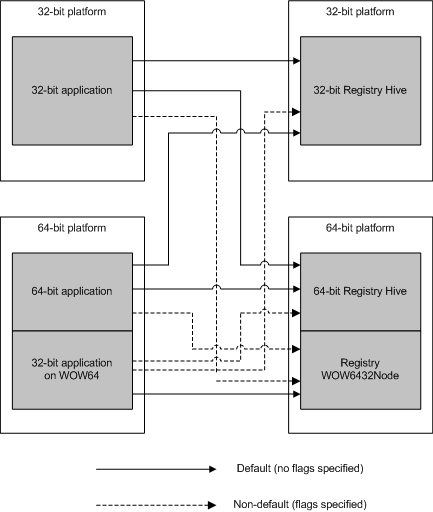Note
Access to this page requires authorization. You can try signing in or changing directories.
Access to this page requires authorization. You can try changing directories.
Client applications and scripts that access standard WMI 32-bit providers continue to operate normally when running on a 64-bit operating system. Only two preinstalled providers, the System Registry provider and the View provider, have 64-bit versions which run side-by-side with the 32-bit versions. However, a 32-bit application that requests 32-bit Windows Driver Model (WDM) instances receives the default 64-bit WDM class instances on a 64-bit operating system.
Accessing Default and Nondefault Provider Data
Generally, provider writers do not include both 32-bit and 64-bit versions of a provider in the same operating system. If no 64-bit provider exists, a 32-bit provider can continue to run through the facilities of WOW64. A 64-bit provider can likewise supply data to a 32-bit application. For more information, see Providing WMI Data on a 64-bit Platform.
If two versions exist, client applications and scripts can use the context parameters available in the COM API and the Scripting API to connect explicitly to a specific nondefault WMI provider, if it is available. For more information, see Requesting WMI Data on a 64-bit Platform.
The following diagram shows the default and nondefault connections, using the registry as an example for which two providers can exist side-by-side on a 64-bit platform.

Related topics